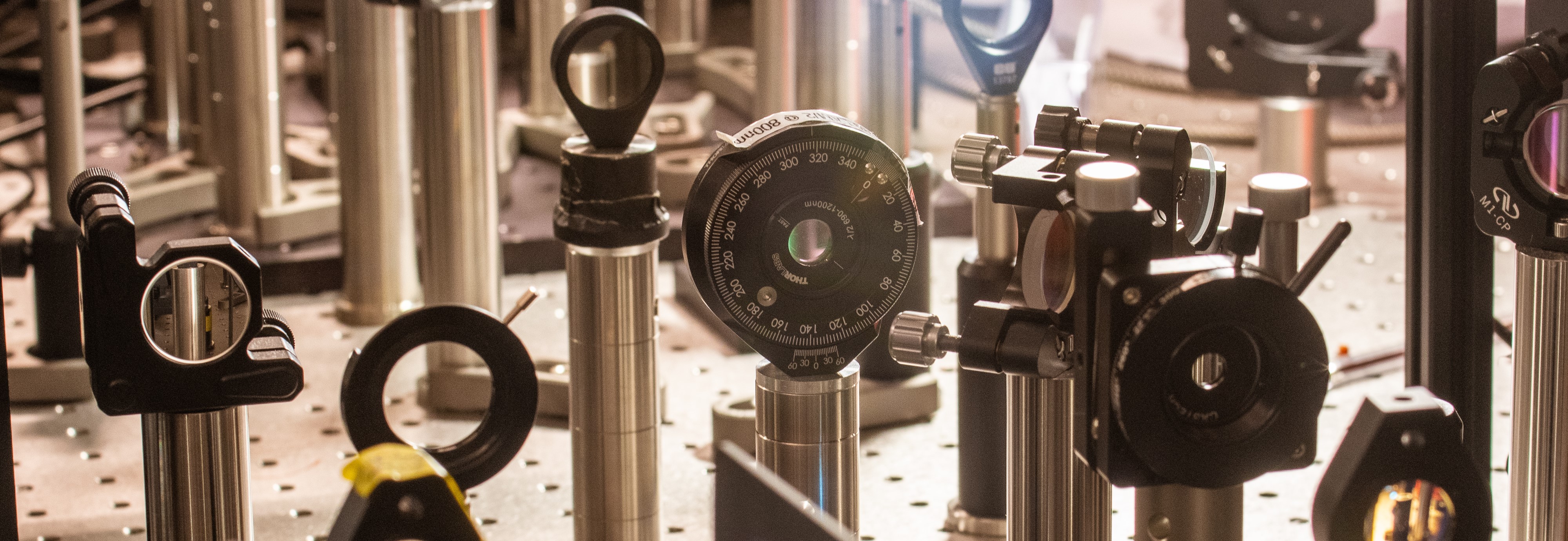Materials Characterisation

With state-of-the-art technology operated by leading experts in their fields, we can help you understand your materials to drive product development and innovation. In addition to the techniques listed on this page for materials characterisation we offer a broad array of imaging services as well as surface analysis techniques. Please contact Claire Gerard () to discuss your requirements.
Warwick Centre for Ultrafast Spectroscopy
WCUS is a state-of-the-art femtosecond laser facility comprising four beamlines with experiments ranging from the ultraviolet to the terahertz regime, and a range of complementary spectroscopic methods.
Fourier Transform Ion Cyclotron Resonance
FT-ICR mass spectrometry is a high-accuracy technique used in the molecular characterisation of complex mixtures in areas including petroleomics, environmental studies, metabolomics and protein analysis.
X-ray Photoelectron Spectroscopy (XPS)
XPS is a technique used to obtain chemical information about the surfaces of solid materials. Both the composition and chemical state of surface constituents can be determined by XPS.
MALDI
Matrix-Assisted Laser Desorption/Ionisation (MALDI) mass spectrometry is an ionisation technique that can be used to analyse biomolecules and large organic molecules from surfaces of samples.
Raman Spectroscopy
Raman spectroscopy measures inelastic scattered light from a sample, giving insight into the structural properties of a material. Applications are broad and include pharmaceuticals, life sciences, energy and carbon materials.
Electron Paramagnetic Resonance Spectroscopy
EPR is a powerful technique for studying materials and molecules with unpaired electrons, which play crucial roles in many processes such as oxidation, catalysis, and polymerisation reactions.
X-ray Fluorescence (XRF)
XRF is one of the most widely-used methods for the non-destructive analysis of major and trace elements in geological materials such as rocks, minerals, sediments and fluids.
Small Angle X-ray Scattering
SAXS is a powerful x-ray technique used in the non-destructive study of nanoparticles in solids, powders, solutions, gels, oils, thin films or coatings, and biological samples.
Fluorescence Spectroscopy
Fluorescence spectroscopy provides information on the electronic structure of a material, such as the band gap or defects present in semiconductors.
Energy Dispersive X-ray Analysis
EDX is a technique used for elemental analysis or chemical characterisation by measuring x-rays emitted by a sample material in response to being hit with charged particles.
UV-Visible Spectroscopy
UV-Vis is a widely-used absorption spectroscopy technique used in biological and chemical analysis to identify concentrations of compounds in a sample.
Infra-Red Spectroscopy
IR-spectroscopy measures how samples interact with infrared radiation to identify their chemical constituents. Its wide-ranging applications include polymer analysis, semiconductors and forensics.
Pulsed Laser Deposition
PLD is a powerful technique that creates thin films of material by striking a sample with a powerful pulsed laser beam. This ablates pieces of material off the sample, which are then deposited onto a substrate material to form a thin film.
Time-of-Flight Mass Spectrometry
TOFMS accelerates ions with an electric field and records the time it takes for the particle to reach a detector. The time will depend on the mass-to-charge ratio of the particle and can be used to identify the ion.
Particle Size Determination
Particle Size Determination techniques determine the size range or average size of particles in a liquid or powder sample. It can be used to understand the characteristics of many materials including paints and coatings, building materials and food products.
Electronic Nose
E-noses can identify aromas using sensors that respond to different classes of chemical components within complex odours to produce a chemical fingerprint. They are regularly used in applications such as environmental testing and food quality.
Single Crystal Growth
Single crystals are crystalline solids in which the crystal structure is continuous and unbroken to the edges of the sample. They have many applications, including optics, electronics, microchips and laser devices.
Diamond Sensors
Our specialists develop boron-doped diamond (BDD) electrochemical sensors that are commercially available for applications in healthcare and environmental water monitoring.
